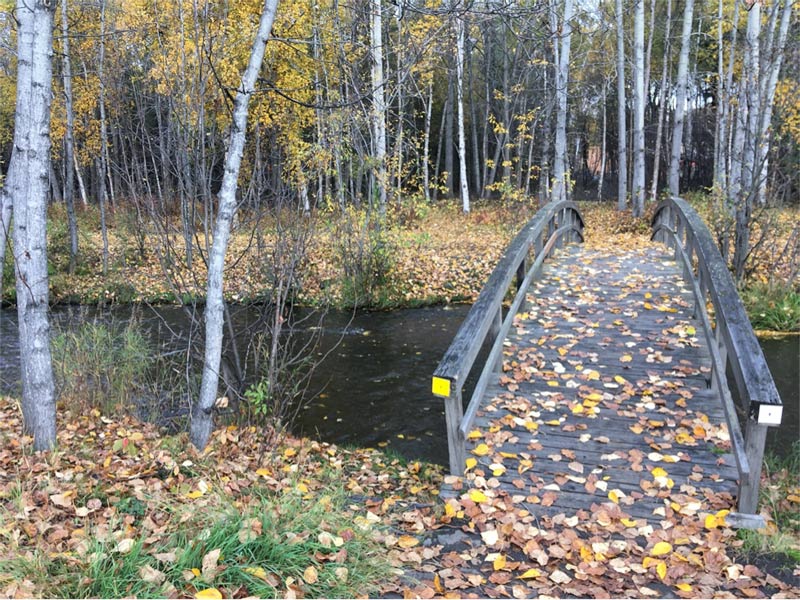9/26/20 – All Around Anchorage
Day 2 in Alaska was spent riding the bike trails around the city of Anchorage. Few places capture the outdoors within the city like Anchorage. While riding the Coastal Trail one doesn’t even know there is city nearby until you see a tall building popping out from around the bend. Lest than ¼ mile from my hotel the Chester Creek Trail gives access to all the others.

I can go anywhere in the city, and all around the city. Not since New York and Central Park did I have such a feeling that I could go anywhere and do anything. I decided to ride all the trails, a good challenge on my one and only solar pre-charged battery. There must be 100 miles or more. This would take some doing.
Just sitting on the bike without peddling I can go 30 miles on one charge. I always peddle some, which generally extends my range to 35-40 miles. It’s cold here in late September, 39 degrees today, so that limits battery capacity by 20%, meaning I can really only go about 32 miles even with peddling. So, what’s a solar enthusiast to do? The only way to stretch 32 miles to 100 miles is to peddle more, and use the battery less; but I certainly don’t want to wear myself out. The fun and exhilaration of an electric bike is to zoom around with little effort. So, here’s the plan. I have 5 days of riding scheduled in Alaska. This is the biggest state in the Union, twice as big as Texas, so Alaska certainly deserves to be one of my 100-mile states. I’ll ride 20 miles per day to get 100 miles. I’ve already learned that I can maintain a 15 mph speed by pulsing the throttle. Three or four seconds at 200 watts gives a little surge that I can maintain for three or four seconds without doing much work. As soon as it feels like I’m doing the work, I pulse the throttle again for another few seconds. The load of my effort is magically lifted and when I release the throttle, I continue to glide with very little effort for another four or five seconds. I’m not timing it; I’m just doing it by feel to maintain a nearly effortless glide.

Here’s the math: 4 seconds at 200 watts = 800 watt-seconds, or 13.33 watt-minutes, or .22 watt-hours. (800 watt-seconds divided by 60 seconds divided by 60 minutes). So, each slight twist of the throttle uses only a tiny bit of energy. Each minute requires seven or eight pulses of the throttle using 1.7 watt-hours. Each hour then uses 102 watt-hours and in an hour’s time I’ve gone 15 miles. To go 20 miles will take 136 watt-hours. Since the total fully charged capacity of my battery is 672 watt-hours, I should be able to go 99 miles. Close enough.
Here’s the beautiful part of the scheme: my battery gauge consists of 5 bars. I start with all five and if my math is correct, going 20 miles each day should use one bar. By the time the battery is drained of all the solar energy stored in it, I should have been able to go 100 miles. Let the fun and the experiment begin here in beautiful Anchorage, Alaska!
